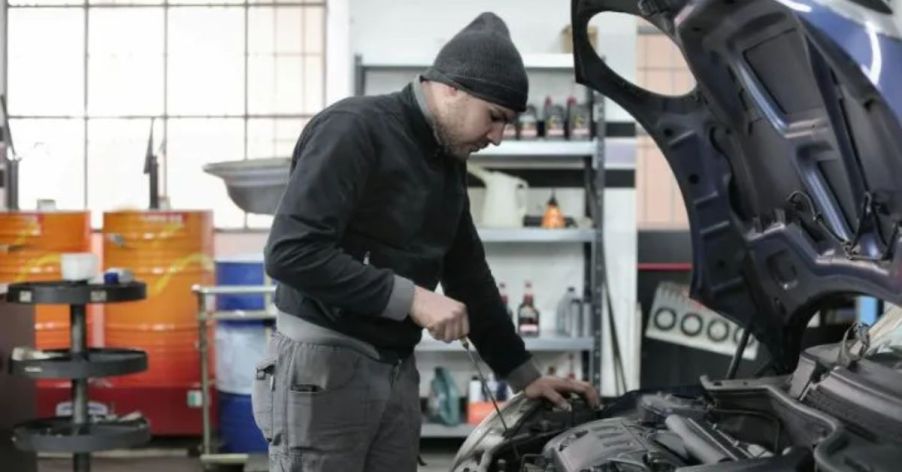
15 Car Parts To Prioritize During Maintenance Checks

Periodic maintenance keeps your car in good shape, prolongs its service life, and adds to its resale value. Though not all areas need frequent servicing, you need to prioritize a few others because they affect your car’s overall performance. Read on to discover 15 areas to always service during maintenance checks.
Oil and Filter Changes

Engine oil lubricates moving parts, reduces friction, and prevents overheating. However, they become contaminated with dirt, debris, and metal particles over time. Depending on your vehicle and the type of oil you use, oil and filters should be changed every 3,000 to 7,500 miles.
Tire Pressure and Condition

When tires are underinflated, they have more surface contact with the road, therefore causing more wear and overheating, which can lead to blowouts. Overinflated tires reduce the tire’s grip and make handling more difficult. Regularly check for signs of tire wear and misalignment and rotate every 5,000 to 8,000 miles.
Brakes

Worn brake pads, identified by squeaking or grinding noises, reduce stopping power and can damage the rotors if ignored. Brake fluid should be flushed every two years to maintain proper hydraulic pressure. Old fluid can attract moisture, reducing its effectiveness and causing corrosion in the braking system.
Fluid Levels

Your vehicle relies on several fluids, including coolant, transmission fluid, brake fluid, power steering fluid, and windshield washer. Low fluid levels result in overheating, transmission slipping, difficulty steering, and poor brake performance. Frequently check these fluid levels, top them off, or replace them when necessary.
Battery Health

A weak battery can cause slow engine cranking, flickering lights, or even prevent the car from starting altogether. Always inspect the battery terminals for corrosion and ensure the battery is adequately charged. Most batteries last 3 to 5 years, but regular tests can help avoid unexpected breakdowns.
Air Filter

The engine air filter prevents dirt, dust, and debris from entering the engine. However, a dirty air filter can reduce airflow and fuel economy, which leads to sluggish performance. Change the air filter every 15,000 to 30,000 miles or as specified in your vehicle’s manual.
Belts and Hoses

Drive belts power various engine components, including the alternator and power steering pump. Hoses transport critical fluids like coolant and fuel. Over time, belts can crack or fray, and hoses may develop leaks or bulges. Inspect belts every 60,000 miles and regularly check the hoses for wear.
Alignment and Suspension

Your vehicle’s alignment and suspension affect its handling and tire durability. Poor alignment can cause uneven tire wear or vibrations. The suspension system ensures a comfortable ride, but worn-out parts can make the vehicle harder to control. Periodically checking these components can extend their life.
Lights

Driving with a burned-out headlight or taillight is punishable in many areas. You should periodically check all exterior lights, including high beams and turn signals, to ensure they work correctly. Burned-out bulbs are relatively easy and inexpensive to replace, but ignoring them can lead to accidents and traffic citations.
Windshield Wipers and Washer Fluid

Wiper blades degrade over time and become less effective at clearing water, dirt, and debris from the windshield. Streaky or noisy wipers indicate they need replacement. Additionally, ensure the windshield washer fluid is filled, as it helps clean off debris and grime that accumulates during driving.
Exhaust System

Having a leak in the exhaust system can cause lower fuel efficiency, loud engine noise, and the potential for carbon monoxide to get into the cabin. A malfunctioning catalytic converter or muffler can also trigger the check engine light. Hence, you should occasionally inspect the exhaust system for rust, holes, or loose connections and address any issues promptly.
Spark Plugs

Frequently check the spark plugs because, if they are worn or dirty, they can cause engine misfires, reduced fuel economy, rough idling, and difficulty starting the vehicle. Depending on the type of spark plugs, they may need to be replaced every 30,000 to 100,000 miles.
Transmission Service

Transmission fluid lubricates the gears and ensures smooth shifting. Heat and friction break down transmission fluids, and this can lead to poor gear engagement, slipping, or transmission failure. Most automakers recommend changing transmission fluid every 30,000 to 60,000 miles, depending on how often you use your car.
Cooling System

Your vehicle’s cooling system regulates engine temperature by circulating coolant through the engine and radiator. Always ensure that the coolant levels, the radiator, the water pump, and the thermostat are in good working condition. Flushing the coolant system every 50,000 miles can help prevent buildup.
Timing Belt

The timing belt (or chain in some cars) synchronizes the camshaft and crankshaft, ensuring the engine’s valves open and close at the correct times. Ideally, the timing belt should be replaced every 60,000 to 100,000 miles. However, ignoring this maintenance can result in catastrophic engine failure.


